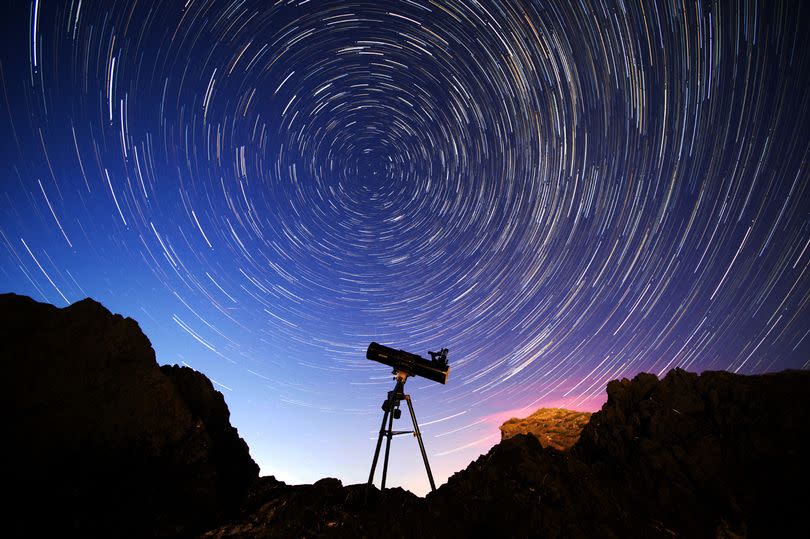How to spot the Lyrid meteor shower as display to light up night sky this month

A meteor shower will light up the night sky from this weekend, offering stargazers the chance to catch it in action until the end of the month.
The Lyrid meteor shower will begin on Sunday, April 14 and continue until April 30, with its peak expected on April 22 and 23. Associated with the comet Thatcher, this celestial display is the oldest recorded meteor shower still visible today - with records of it dating all the way back to the year 687 BCE.
The Lyrids have an average rate of 18 meteors per hour, meaning there will be plenty of opportunity to catch them streaking across the night sky if conditions are favourable. Royal Museums Greenwich (RMG) have issued some top tips on where and when you will have the greatest chance of catching the incredible display this month.
How to see the Lyrid meteor shower
As with all meteor showers, it's best to find a dark site away from light pollution with an unobstructed view of the sky, Greenwich Observatory advised. However, the number of meteors you actually see will depend on several factors, from the time of night to the level of background light - the Lyrids peak will coincide with the full moon, for example, which will make viewing conditions less favourable.
The best time to see the shower generally is in the early morning of the peak day, the experts suggested. "Wait until after midnight when the radiant point, in the constellation of Lyra, will have risen in the East," RMG said.
The radiant point is the point in the sky from which the paths of the meteors appear to originate; to find the Lyra constellation, look out for four bright stars that form a rhombus shape. The later in the morning you wait, the higher the radiant will rise and the fewer meteors will be hidden below the horizon.
"But the closer you get to sunrise the brighter the sky is going to become, so plan accordingly," RMG advised.
Full list of 2024 meteor shower dates
The Lyrids kick off a season full of spectacular displays in the night sky, including an overlap with the Eta Aquariids meteor shower which will begin on April 19 and continue until May 28. With a possible hourly rate of 50 meteors which appear low in the sky, this shower will peak between midnight and dawn on May 6.
Here's a full list of all the other meteor showers that will light up our skies this year, their dates and hourly rates:
Alpha Capricornids: July 3 - August 15 (peak July 30); five meteors per hour
Delta Aquariids: July 12 - August 23 (peak July 30); 25 meteors per hour
Perseids: July 17 - August 24 (peak August 12-13); 100 meteors per hour
Draconids: October 6-10 (peak October 8-9); 10 meteors per hour
Orionids: October 2 - November 7 (peak October 21-22); 25 meteors per hour
Taurids: October 20 - December 10 (peak November 12-23); five meteors per hour
Leonids: November 6-30 (peak November 18); 10 meteors per hour
Geminids: December 4-20 (peak December 14-15); 150 meteors per hour
Ursids: December 17-26 (peak December 23); 10 meteors per hour

 Yahoo News
Yahoo News 
